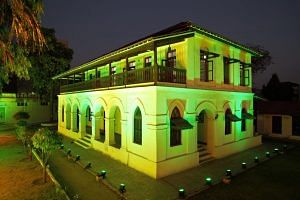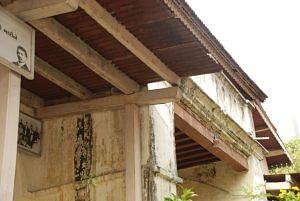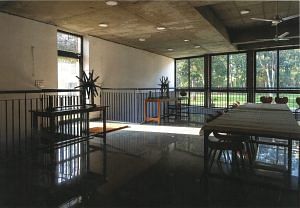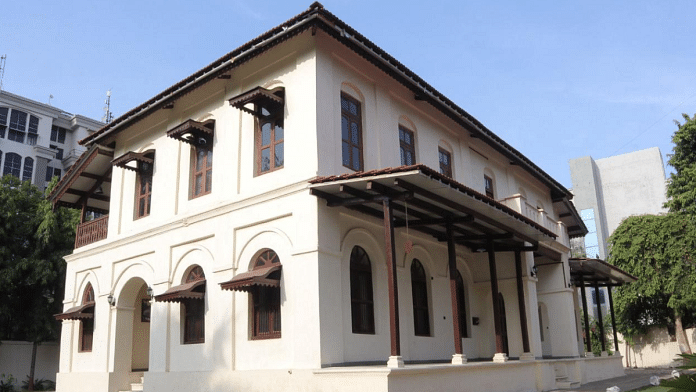New Delhi: Prime Minister Narendra Modi inaugurated the redeveloped Kochrab Ashram in Ahmedabad, Gujarat on Tuesday to mark the 94th anniversary of the Dandi March.
The Prime Minister also revealed the master plan for the Rs 1,200 crore Gandhi Ashram Memorial and Precinct Development Project.
Kochrab Ashram holds significant historical importance as the first ashram established by Mahatma Gandhi upon his return to India from South Africa in 1915. During the inauguration, Modi emphasised its role in preserving the legacy of Gandhi’s teachings.
Paying homage to all those who took part in the Dandi March under Bapu’s leadership, which began on this day in 1930.
Later today at around 10 AM, I will attend a programme to mark the inauguration of the redeveloped Kochrab Ashram, which had a very special place in Mahatma… pic.twitter.com/jQMNz8d7V3
— Narendra Modi (@narendramodi) March 12, 2024
On 20 May, 1915, Gandhi took residence in a dwelling located in the Kochrab hamlet, near Paldi, situated on the outskirts of Ahmedabad. The bungalow, generously provided by Jeevanlal Desai, a fellow lawyer and colleague, later became the Satyagraha Ashram under Gandhi. It is still preserved as a memorial and tourist place by deemed university Gujarat Vidyapith.
Kochrab Ashram, where Gandhi stayed for two years, served as a communal living space promoting self-improvement, self-sufficiency, and community service. The redeveloped ashram now features modern amenities while preserving Mahatma Gandhi’s belongings and historical documents.
Gandhi drafted a set of rules and observances for the ashramites, later adopted as ashram observances. About 25 men and women, associates of Gandhi in South Africa, including Maganlal Gandhi, became the initial members of the Ashram Community.

Questions arose when Gandhi admitted a Dalit family — Dudhabhai, Daani ben, and their daughter Lakshmi, as ashram members — leading to controversy within and outside the ashram.
Monetary assistance ceased, and despite the pressure, Gandhi remained resolute and was ready to close down the ashram. It was then that industrialist and philanthropist Ambalal Sarabhai stepped in and donated Rs 13,000 to save it from financial crisis.
In his autobiography My Experiments with Truth, Gandhi talks about how when a plague broke out he saw “the evident danger to the safety of the ashram children”. His ideal was to have the ashram at a safe distance and was determined to “settle on the ground of our own” He left Kochrab after the plague.
The ashram also served as the starting point for Gandhi’s advocacy of khadi, equality for the poor, Hindi as the national language, self-reliance, and independence.

Satyagraha Ashram, Kochrab has Gandhi’s room, his wife Kasturba’s room, a library, kitchen, store room, washroom, and a newly-constructed activity centre.
The colonial-style building underwent a significant revamp to transform into a centre of heritage and knowledge. Modern techniques have helped preserve Gandhi’s belongings and historical documents.
Modi told his audience Tuesday: “Mahatma Gandhi stayed at the Kochrab Ashram for two years after having returned from South Africa and this is where he learnt how to use the charkha and do other works before moving to Sabarmati Ashram. After the redevelopment, the memories of his initial days will be safely conserved in the Kochrab Ashram.”
He also wrote on microblogging site X, “Bapu’s ideals are our guiding light. The inauguration of the revamped Kochrab Ashram and launch of the Gandhi Ashram Memorial Master Plan will further his vision and inspire every Indian for generations to come.”
The Gandhi Ashram Memorial master plan aims to expand the existing five-acre of the ashram to 55 acres, restoring and conserving 36 buildings, including Gandhi’s residence, Hriday Kunj. The plan includes new structures for administration facilities, visitor amenities, interactive workshops, and public utilities. An orientation centre, a library, and archive buildings will be built to safeguard and disseminate Gandhi’s ideas.
Modi further said “a nation unable to safeguard its heritage jeopardises its future. Bapu’s Sabarmati Ashram is not merely the heritage of our country but that of humanity as a whole”.
Expressing gratitude for the cooperation of ashram dwellers in reclaiming the 55-acre plot, he attributed the prolonged neglect of such monuments to a lack of willpower, a “colonial mindset”, and “appeasement”, adding Gujarat had “shown the way to the preservation of heritage for the entire nation”.


(Edited by Tikli Basu)
Also read: ‘How can 800-yr-old masjid be an encroachment?’ Mehrauli mosque demolition confounds historians



